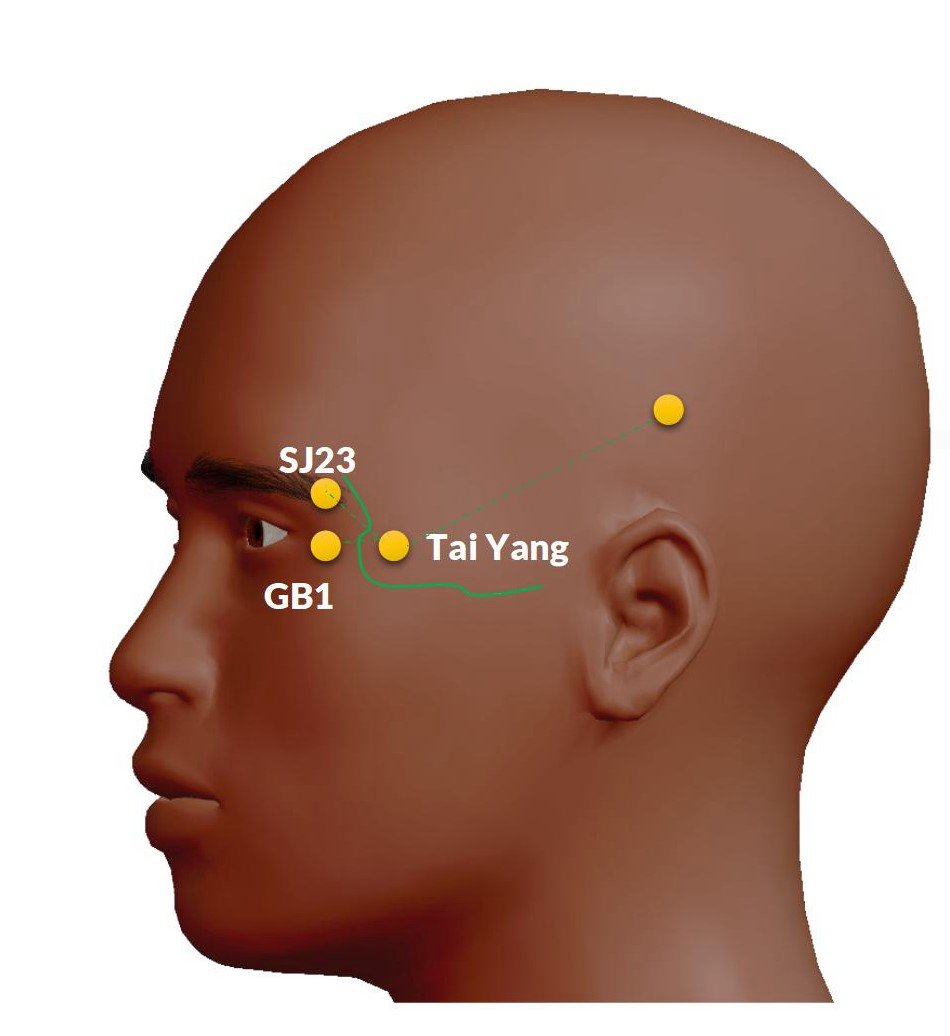Location of Tai Yang
Tai Yang Ex-HN-5: at the temple, in the tender depression, approximately 1 cun posterior to the midpoint between the lateral extremity of the eyebrow and the outer canthus of the eye
Manipulation of Tai Yang
- Insert perpendicularly 0.5-0.8 cun
- penetrate posteriorly towards Shuai Gu – GB8 1-1.5 cun
- obliquely insertion anteriorly for 0.3-0.5 cun
- oblique insertion anteriorly 0.5-1 cun towards Si Zhu Kong – SJ23
- or prick to bleed.
Video of Puncturing Taiyang (in Danish )
Category
Liver (gallbladder)
Indications
- Shaoyang: one-sided headache, dizziness, toothache, and trigeminal neuralgia (penetrate posteriorly towards Shuai Gu – GB8 1-1.5 cun)
- Eyes: dimness of vision, redness and swelling, pain, and deviation of the mouth and eye (obliquely insert anteriorly towards Si Zhu Kong – SJ23 0.5-1 cun or insert transversely anteriorly, or insert perpendicularly)
Commentary
The acupoint is located in the region of Tong Zi Liao – GB1, Si Zhu Kong – SJ23, and Shang Guan – GB3. Therefore, it is categorized as the gallbladder and treats Shaoyang and eye disorders. In Jin’s Three Needles (J3N), Tai Yang, together with Si Shen Zhen (四神针1.5 cun anterior, posterior, and lateral to DU20) and Yin Tang (印堂) are called Headache and Dizziness
Research on Tai Yang / Taiyang
The contrast sensitivity of myopic patients was improved after acupuncture at the Taiyang acupoint (20 min), which may be related to microstate C.
Su et al. The effect of acupuncture at the Taiyang acupoint on visual function and EEG microstates in myopia
Treatment of puncturing EX-HN5 (Taiyang) towards ST4 (Dicang) and ST6 (Jiache) could enhance the facial nerve conduction function and microcirculation, and boost the metabolism, so as to recover the facial nerve function and improve the symptoms in peripheral facial paralysis .
Bo et al. Clinical Study on Puncturing EX-HN5 (Taiyang) Towards ST4 (Dicang) and ST6 (Jiache) Treating Peripheral Facial Paralysis and Its Effect on Conduction Function of Facial Never
